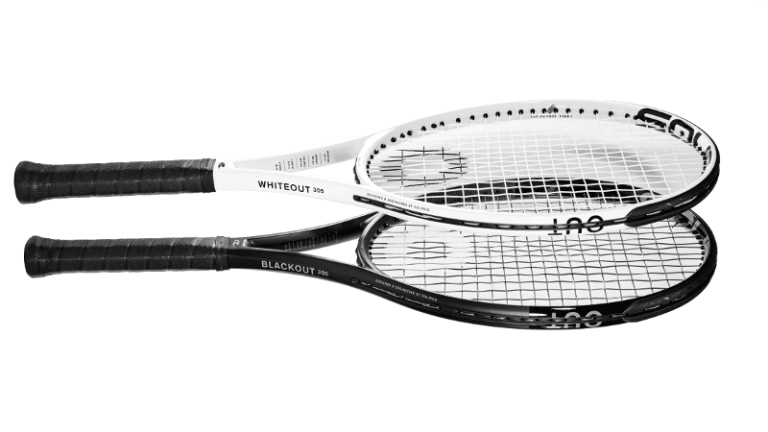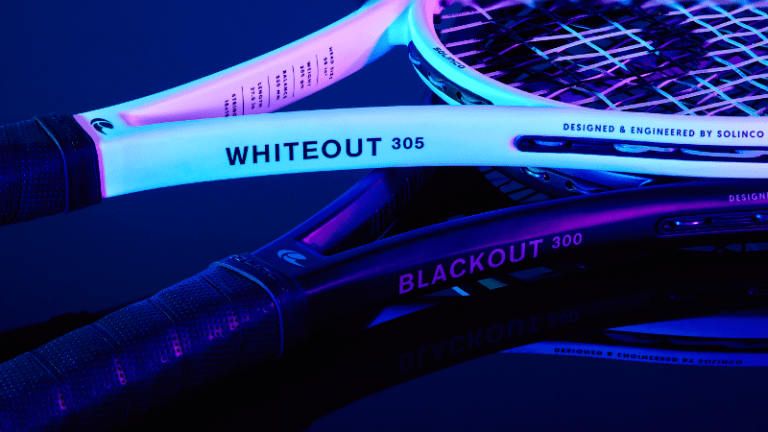Tour Bite. Hyper-G. Confidential.
Players who know string, know Solinco. While the company also makes accessories such as bags and overgrips, it’s their strings—most notably the three aforementioned polyesters—that have garnered its strong reputation amongst serious players of all stripes. However, Solinco has always had its sights set on being a complete tennis brand, and not having any racquets in its lineup left a gaping hole. But that’s about to change with the upcoming release of the brand-new WHITEOUT and BLACKOUT racquet franchises.
Adding racquets to the portfolio may seem risky, but there was a time not long ago when Babolat was thought of as just a string brand. Then they created the Pure Drive, seeded it with a bunch of juniors and pros—including a charismatic, hard-serving American named Andy Roddick—and the rest is history.
That would obviously be a best-case scenario for Solinco. Knowing the competitiveness of the racquet marketplace, their initial goals are much more modest. They’ve previously released a few models over the years, but none enjoyed much traction. But after investing more time, capital and know-how in these racquets, the company believes they’ve created worthy frames that a wide range of players will enjoy.
We spoke with KT Kim, Director of Solinco Sports, to get the more details on the new WHITEOUT and BLACKOUT lines.
Why did you feel like the timing was right to launch these racquets?
Our vision has never been to be just a string brand. Our mission has always been to equip players with everything they need to play tennis at the highest levels. Early on we were focused on strings, and that’s the segment where we built our name in the marketplace by bringing innovative products to market. But our goal has always been to be a head-to-toe equipment brand.
It was almost four years ago when we really decided to commit the time, energy, money and resources to this racquet project. We really wanted to get the right people on board to make an impact. There were two seasoned industry experts in particular that have been part of process for years. We brought on a premiere racquet engineer who has been the head of research and development at multiple racquet companies and in the industry for decades. The second specialist was Roman Prokes, who has decades of experience testing, customizing and perfecting equipment for every type of player, from world No. 1s to weekend warriors, and he’s been intimately involved in the whole process as well.
From concept to execution, can you talk about the length of the process and the research and development that went into designing the racquets?
We knew it wouldn’t be a quick turnaround. Racquet production is a completely different process from string production, with more steps and more hands involved at every stage.
Fortunately, we had the luxury of time. And I think that was one of the most important aspects in the process. When we thought about the racquet development process, we took the same approach as we do with our strings. We don’t give ourselves deadlines; we take however long it takes to develop something that we’re 100 percent happy with and proud of. These racquets are the culmination of more than three years of development. We truly did an extensive amount of testing, tweaking, revising, resulting in a mind-numbing number of iterations and prototypes to get to where we are today.

